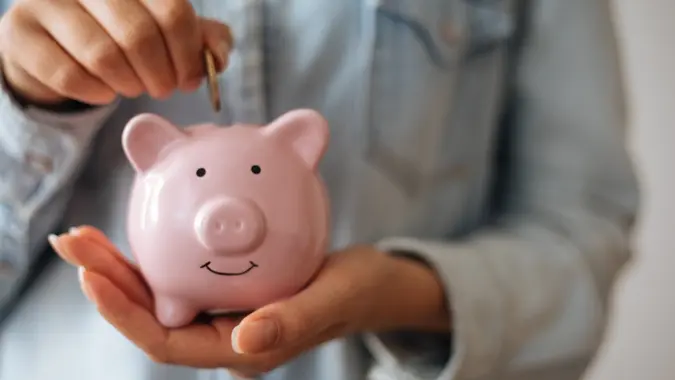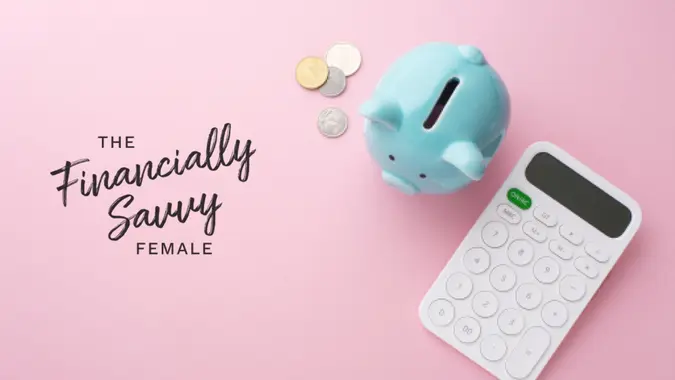I’ve Got My Emergency Fund Squared Away — Now What?

Commitment to Our Readers
GOBankingRates' editorial team is committed to bringing you unbiased reviews and information. We use data-driven methodologies to evaluate financial products and services - our reviews and ratings are not influenced by advertisers. You can read more about our editorial guidelines and our products and services review methodology.

20 Years
Helping You Live Richer

Reviewed
by Experts

Trusted by
Millions of Readers
It’s no small feat to build an emergency fund of three to six months of your income, as many advisors recommend. So if you’ve completed that important step, congratulations! You’ve already put in place the cornerstone of a successful financial plan. Having that money socked away can help prevent you from falling into debt and can give you peace of mind that in a bad situation, you’ve got things covered.
As important as an emergency fund is, however, it’s only one piece of the puzzle. After you’ve built that foundation, there are plenty of other financial goals to tackle. Here’s what you should look at doing next.
Pay Off Your Credit Card Debt
Debt is capable of ruining even the best financial plan. With the average credit card interest rate exceeding 21%, according to the Federal Reserve Bank of St. Louis, even a small debt can rapidly spiral out of control.
Many advisors recommend aggressively paying off high-rate debt even before you begin an investment program, because it’s highly unlikely you can consistently earn 21% or more on your investments. But if you pay off high-rate debt, you’re essentially “earning” a guaranteed 21%-plus on that money since you’ll no longer be paying that rate of interest.
Think of it this way: If you have $10,000 in credit card debt at a 21% rate of interest, that debt will climb to $12,100 after one year. But if you use $10,000 to pay that debt off, you won’t owe that additional $2,100. That $2,100 you save is essentially the same thing as if you invested $10,000 and earned the same 21% return.
Boost (or Start) Your Retirement Plan Contributions
Tax-advantaged retirement accounts, like IRAs and 401(k) plans, are a great way to build long-term wealth. Once your emergency fund is set up, it’s time to maximize your retirement plan contributions.
If you work for an employer that offers a 401(k) plan, your goal should be to contribute enough to maximize your employer match. For example, if your employer offers to match 50% of the first 6% of your salary, you should try to contribute at least 6% of your salary.
The employer 401(k) match is essentially free money that goes directly into your retirement account, and over time it can significantly boost your total savings. Contributing more is always a good idea, but at the very least, you should target earning your full employer match.
If you aren’t covered by a retirement plan at work, consider maximizing your IRA contributions instead. While you won’t get an employer match, and contributions are limited to $7,000 for 2025, you can still get a tax deduction on qualifying contributions and enjoy tax-deferred growth within the account.
Set Additional Savings Goals
Your next financial step is to set up savings accounts for additional goals, like vacations, weddings or even the down payment on a home. Establishing separate accounts can keep you from dipping into your emergency fund — or worse, using your credit card — to fund these expenses. It can also instill discipline to hold off on making any purchases until you can truly afford them.
For example, if you’re looking to spend $5,000 on a vacation next year, save a bit over $400 per month in a separate savings account. That way, you’ll have the $5,000 you need when you take your trip and you won’t have to worry about going into debt to fund it.
Protect Yourself With Insurance
Once you start building your net worth, you’ve got to protect it with insurance.
While health insurance should go without saying, disability and long-term insurance should also be on your radar. If you own a home, homeowners insurance is all but mandatory. Long-term care insurance is becoming more and more popular, especially with people living longer and the cost of healthcare skyrocketing. Life insurance can also be essential to protect your loved ones, especially if you are the primary breadwinner in your family.
To ensure you don’t overlook any coverage, it’s a good idea to talk with a financial advisor or licensed insurance agent.
Final Take To GO
If you’ve built a solid emergency fund, you’re already making significant progress towards financial freedom. But there’s a reason why they call an emergency fund the cornerstone of a financial plan — because it’s just a foundation, not the whole structure.
Retiring expensive debt, funding retirement accounts, saving for specific goals and having the right insurance coverage are all important next steps in building a comprehensive, lifelong financial plan.
More From GOBankingRates
 Written by
Written by  Edited by
Edited by 

























